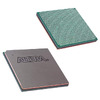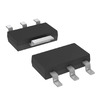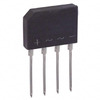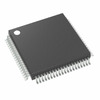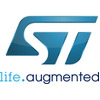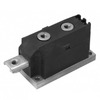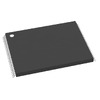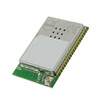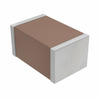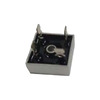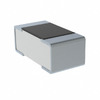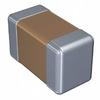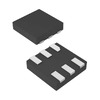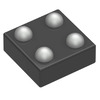2N7000 vs BS170: Comparing Two Popular N-Channel MOSFETs
Transistors play an important role in electronic devices, and they are widely used in the design of analog and digital circuits. At present, bipolar transistors and junction field-effect transistors have been widely used, but the most widely used one is the metal oxide semiconductor field-effect transistor (MOSFET). This article will compare the 2N7000 and BS170N in many aspects to explore their differences in characteristics, parameters, and uses.
Catalog
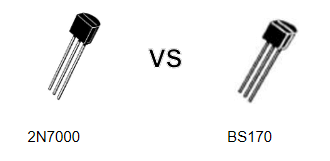
What is a MOS Field Effect Transistor?
MOS field-effect transistors are also called metal oxide semiconductor field effect transistors (MOSFET). It generally has depletion type and enhanced type. Enhanced MOS field-effect transistors can be divided into NPN type and PNP type. The NPN type is usually called the N-channel type, and the PNP type is also called the P-channel type. For N-channel field-effect transistors, the source and drain are connected to the N-type semiconductor. Similarly, for a P-channel field-effect transistor, the source and drain are connected to the P-type semiconductor.
Overview of 2N7000
2N7000 is an N-channel MOSFET in TO-92 package. Unlike a BJT transistor which is a current-controlled device, a MOSFET is a device that is controlled by applying a voltage to its gate. One of the main features of MOSFET technology is that the transistor requires very little or no input current to control the load, making MOSFETs ideal for use as amplifiers. It can be used in most situations requiring 400 mA DC and can provide 2 amps of pulse current. At the same time, it is also suitable for low voltage and low current fields such as small servo motor control, power MOSFET gate drivers, and other switches.
Replacement and Equivalent
• BS170
• 2N7002
• 2N7000G
• 2N7000-D74Z
• IRF3205
Overview of BS170
The BS170 is an N-channel enhancement mode MOSFET capable of switching 60V. It has a maximum drain current rating of 500mA (continuous) and 1200mA (pulsed), a drain-source resistance of 1.2 ohms, and a maximum power dissipation rating of 830 milliwatts. Due to its similar characteristics, BS170 is often used to replace 2N7000. Its gate threshold voltage is rated at 3V (VDS=VGS, ID=1mA), which makes the BS170 a logic level MOSFET suitable for digital signal processing and control.
Replacement and Equivalent
• BS170G
• 2N7002
• 2SK423
2N7000 vs BS170: PCB Footprints

2N7000 vs BS170: Technical Parameters

From the chart above, we can see that the parameters of the two are very similar, but there are differences in power dissipation, continuous drain current, and thermal characteristics. Since the 2N7000 is suitable for low-power applications and has lower current and voltage levels, its static power consumption is lower. Because BS170 supports larger current and voltage, it will have higher power consumption in some aspects.
In addition, the maximum drain-source current of the 2N7000 is 350mA, but it is not clearly stated whether the current is in a continuous state or a pulsed state. Meanwhile, the BS170 has a maximum drain-to-source current of 500mA (continuous) and 1200mA (pulsed). Therefore, the maximum on-current of BS170 is higher than that of 2N7000. This also means that under the same working conditions, BS170 may be more suitable for use in certain circuits than 2N7000.
2N7000 vs BS170: Features
Features of 2N7000
• Rugged and reliable
• This device is Pb-Free and Halogen Free
• Voltage controlled small signal switch
• High saturation current capability
• High density cell design for low RDs(on)
• Operates at low voltage and current and has low DC impedance, allowing it to be used as a switch
• With low impedance and low power consumption, it can be used in a variety of electronic circuit systems
Features of BS170
• Rugged and reliable
• These are Pb-Free Devices
• Voltage controlled small signal switch
• High saturation current capability
• High density cell design for low RDs(ON)
• Drain-to-source resistance is 1.2 ohms (typ)
• Maximum rated power dissipation is 830 milliwatts
2N7000 vs BS170: Pin Configuration
2N7000 Pin Configuration
Similar to any other MOSFET, the 2N7000 pin configuration has three pins, namely source, gate, and drain from left to right (flat side, with leads pointing downwards), as shown in the following figure:
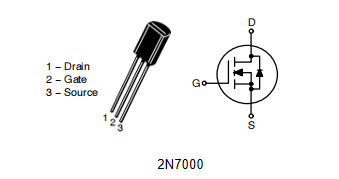
Gate (G): The gate of 2N7000 is the control end of a field-effect transistor, usually connected to the control signal of a circuit, such as a microcontroller, chip, sensor, etc.
Drain (D): The drain of 2N7000 is the output end of a field-effect transistor, usually connected to controlled circuits such as LEDs, motors, relays, etc.
Source (S): The source of 2N7000 is the input of a field-effect transistor, usually connected to the GND of the circuit.
It is worth noting that ONSEMI released the latest datasheet for 2N7000 in January 2022. Among them, the positions of the Drain and Source pins have been swapped, and the actual pin configuration is the same as in the figure above, where pin 1 is the source and pin 3 is the drain.
Pin Configuration of BS170
The pin configuration of BS170 includes three pins, which are drain, gate, and source from left to right (flat side, lead facing down).
It is worth noting that ONSEMI released a new version of BS170 in December 2021, which has a different pin layout from other manufacturers' designs. In this new version, the positions of the Gate and Source pins have been swapped. The following is a comparison between the original and new pin configurations of BS170.

Gate (G): Control the MOSFET to turn it on and off
Drain (D): Current flows through the drain, usually connected to the load (P-channel)
Source (S): Current flows out of the transistor through the emitter, usually grounded (P-channel)
2N7000 vs BS170: Application
Application of N7000
• Audio amplification
• IC output
• Various signal amplification
• Microcontroller output
• Audio preamplifier
Application Fields of BS170
• LED flasher and dimmer
• As a power MOSFET gate driver
• Control small servo motors
• Low power switching applications: small lights, motors, and relays
• Switching loads below 500mA (continuous) and 1200mA (pulsed)
2N7000 vs BS170: Package

Both come in TO-92 packages. This package form is relatively common and has the advantages of small size, easy assembly, and suitable for a variety of application scenarios. TO-92 is the most compact semiconductor component package, which is mainly made of a mixture of epoxy resin and plastic materials. Because of its compactness and the materials used, the device's heat resistance is even better.
Frequently Asked Questions [FAQ]
1. What is a BS170?
The BS170 is a N-channel enhancement mode Field Effect Transistor is produced using high cell density, DMOS technology. This very high-density process has been designed to minimize on-state resistance while providing rugged, reliable, and fast switching performance.
2. What is the use of 2N7000 transistor?
It can be used in most applications requiring up to 400mA DC and can deliver pulsed current up to 2A. It is also suitable for low voltage, low current applications such as small servo motor control, power MOSFET gate drivers, and other switching applications.
3. What is the use of BS170?
BS170 can be used in switching circuits to control the flow of current in electronic devices. Its small size, high switching speed, and low on-resistance make it suitable for efficient switching applications in various electronic circuits.
4. What is the resistance of 2N7000?
The 2N7000 can switch 200 mA. The BS170 can switch 500 mA, with a maximum on-resistance of 5 Ω at 10 V Vgs.
5. What is the difference between BS170 and 2N7000?
Packaged in a TO-92 enclosure, both the 2N7000 and BS170 are 60 V devices. The 2N7000 can switch 200 mA. The BS170 can switch 500 mA, with a maximum on-resistance of 5 Ω at 10 V Vgs. The 2N7002 is a part with similar (but not identical) electrical characteristics as the 2N7000 but different package.
About us
ALLELCO LIMITED
Read more
Quick inquiry
Please send an inquiry, we will respond immediately.
→ Previous
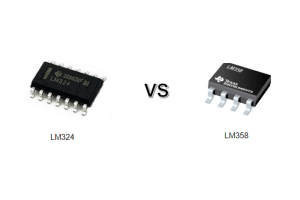
The main function of the operational amplifier is to amplify the amplitude of the input signal so that the weak signal can be amplified to an amplitude range suitable for subsequent circuit processing. Today, we will learn about the differences between the two operational amplifiers LM324 and LM358....
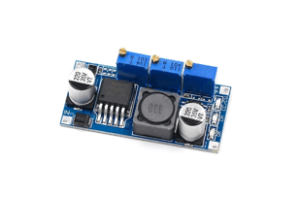
A voltage regulator is a power supply circuit or equipment that can automatically adjust the output voltage. It can stabilize the power supply voltage that fluctuates greatly or does not meet the requirements of electrical equipment within the set value range, enabling various circuits or electrical...
→ Next

LM324 vs LM358: Which Operational Amplifier is Best for Your Projects
on April 29th

From Theory to Practice: Implementing the LM2596 Voltage Regulator in Your Projects
on April 29th
Popular Posts
-

What is GND in the circuit?
on January 1th 3255
-

RJ-45 Connector Guide: RJ-45 Connector Color Codes, Wiring Schemes, R-J45 Applications, RJ-45 Datasheets
on January 1th 2805
-

Understanding Power Supply Voltages in Electronics VCC, VDD, VEE, VSS, and GND
on November 20th 2613
-

Fiber Connector Types: SC Vs LC And LC Vs MTP
on January 1th 2252
-

Comparison Between DB9 and RS232
on January 1th 1868
-

What Is An LR44 Battery?
Electricity, that ubiquitous force, quietly permeates every aspect of our daily lives, from trivial gadgets to life-threatening medical equipment, it plays a silent role. However, truly grasping this energy, especially how to store and efficiently output it, is no easy task. It is against this background that this article will focus on a type of coin cell battery that may seem insignificant on the...on January 1th 1836
-

Understanding the Fundamentals:Inductance Resistance, andCapacitance
In the intricate dance of electrical engineering, a trio of fundamental elements takes center stage: inductance, resistance, and capacitance. Each bears unique traits that dictate the dynamic rhythms of electronic circuits. Here, we embark on a journey to decipher the complexities of these components, to uncover their distinct roles and practical uses within the vast electrical orchestra. Inductan...on January 1th 1791
-

What Is RF and Why Do We Use It?
Radio Frequency (RF) technology is a key part of modern wireless communication, enabling data transmission over long distances without physical connections. This article delves into the basics of RF, explaining how electromagnetic radiation (EMR) makes RF communication possible. We will explore the principles of EMR, the creation and control of RF signals, and their wide-ranging uses. The article ...on January 1th 1781
-

CR2430 Battery Comprehensive Guide: Specifications, Applications and Comparison to CR2032 Batteries
What is CR2430 battery ?Benefits of CR2430 BatteriesNormCR2430 Battery ApplicationsCR2430 EquivalentCR2430 VS CR2032Battery CR2430 SizeWhat to look for when buying the CR2430 and equivalentsData Sheet PDFFrequently Asked Questions Batteries are the heart of small electronic devices. Among the many types available, coin cells play a crucial role, commonly found in calculators, remote controls, and ...on January 1th 1777
-

Comprehensive guide to hFE in transistors
Transistors are crucial components in modern electronic devices, enabling signal amplification and control. This article delves into the knowledge surrounding hFE, including how to select a transistor's hFE value, how to find hFE, and the gain of different types of transistors. Through our exploration of hFE, we gain a deeper understanding of how transistors work and their role in electronic circu...on November 20th 1765
